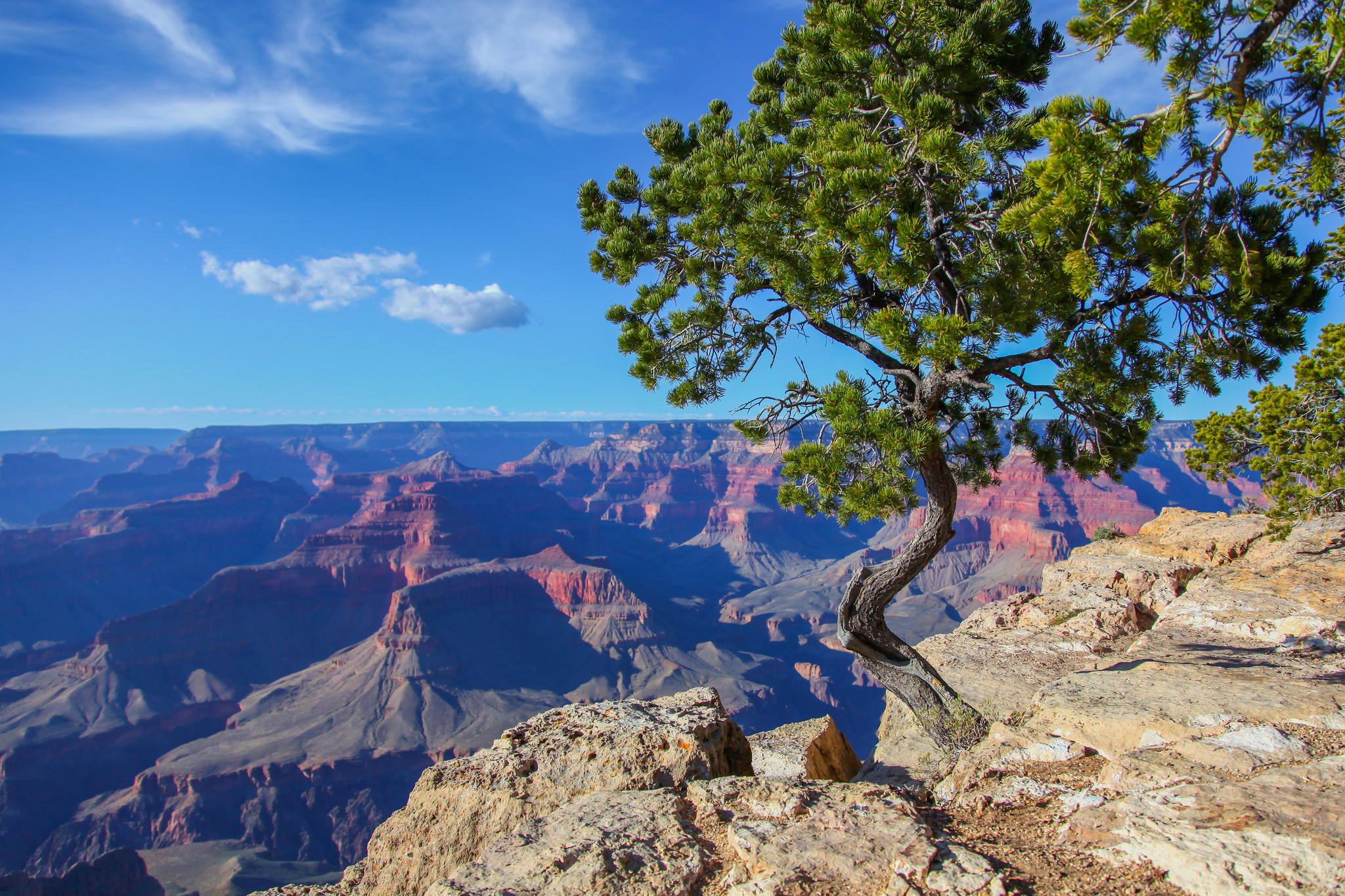- On February 26, the Grand Canyon celebrates 100 years as a designated national park.
- The site is home to vast hiking trails, breathtaking views, and rare wildlife.
- Thrill-seeking visitors of the park can view the canyon from a glass skywalk that’s located 4,000 feet above the ground.
- Other visitors might want to embark on a rafting journey through the Colorado River, which flows through the Grand Canyon.
- Visit INSIDER.com for more stories.
The Grand Canyon has reached a major milestone this month.
On February 26, the Grand Canyon celebrates 100 years as a designated national park. There are tons of events scheduled throughout the Grand Canyon in the coming weeks to mark its centenary as a national treasure, but there’s just as much to do and see at the park all year long.
The national treasure – which is not only spread across a swathe of Arizona, but also borders Utah and Nevada – has much to offer, from its breathtaking skywalk to its stunning nature views. These photos might make you want to visit.
According to scientists, the Grand Canyon has been around for millions of years.
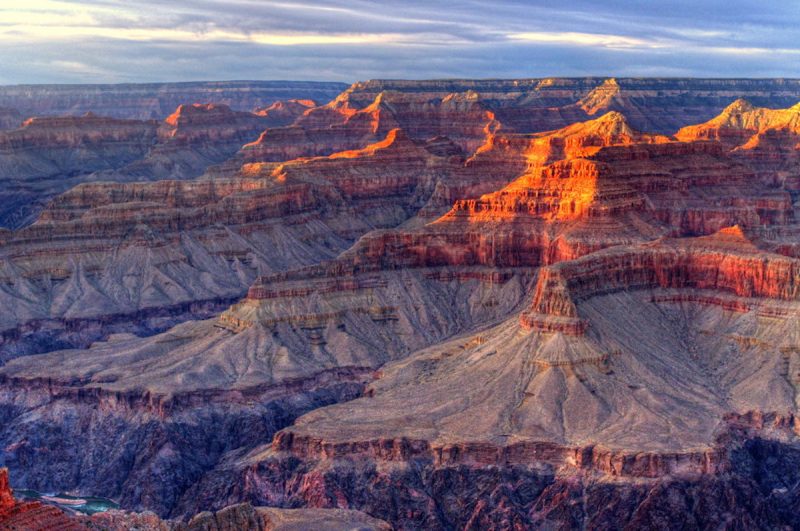
Still, the exact age of the national park is debatable.
While some scientists believe that the park dates back six million years, other researchers feel there's enough evidence to prove that its actually been around for 70 million years.
In a study conducted by Nature Geoscience, researchers found that there's sound logic behind both of those numbers. Simply put, the middle of the Grand Canyon is likely older than its outer edges.
Its middle Hurricane segment was likely formed between 50 and 70 million years ago, while the nearby Eastern Grand Canyon was likely formed between 15 and 25 million years ago, according to Nature Geoscience.
However, the ends of the Grand Canyon are probably younger. Called the Marble Canyon and Westernmost Grand Canyon, these formations were likely carved from the Colorado River within the past five or six million years, the study found.
Much of the national park is filled with orange and red rocks.

While many of the formations look similar, there are actually multiple types of rock found throughout the park. According to the Grand Canyon's website, visitors can expect to find rocks such as limestone, siltstones, shale, and mudstones, among others.
Occasionally, heavy clouds will completely cover the landmark.

The phenomenon, called a cloud inversion, is pretty rare. It only occurs when "cold air is trapped in the canyon and topped by a layer of warm air," according to the Washington Post.
The view is breathtaking if you're lucky enough to see it in person.
Even when clouds over the Grand Canyon are minimal, it's a sight to behold.

This specific view is visible from Yavapai Point, a location on the South Rim of the Grand Canyon.
You can experience the Grand Canyon in a unique way during the winter.
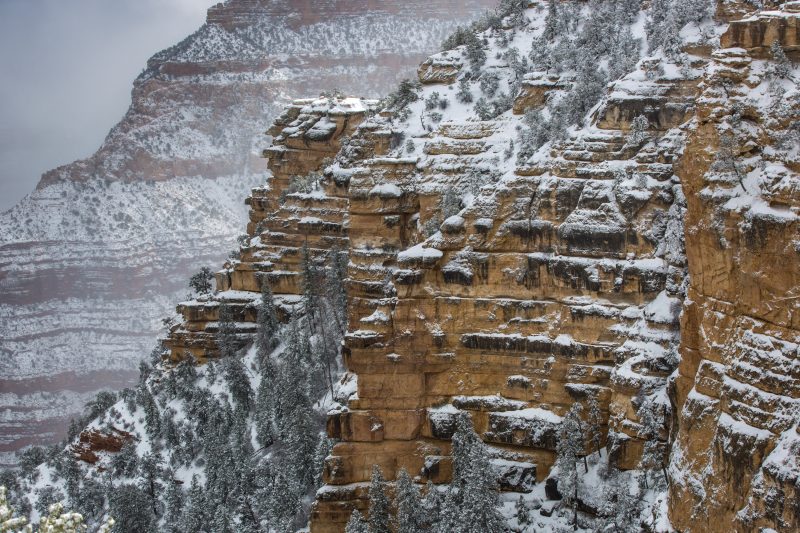
According to the Grand Canyon's website, the park experiences less tourists in winter months as a result of colder temperatures and occasional snowstorms.
The Grand Canyon's roads and South Rim area are accessible year round.

Some areas may close during exceptionally bad storms, but "those prepared for ice and snow will find the Bright Angel Trail a bit quieter and scenic drives less congested," according to the park's website.
The Bright Angel Trail, which is located at the park's South Rim, is said to be one of the best hiking spots at the Grand Canyon.
The park's plants and wildlife look particularly majestic in the snow.
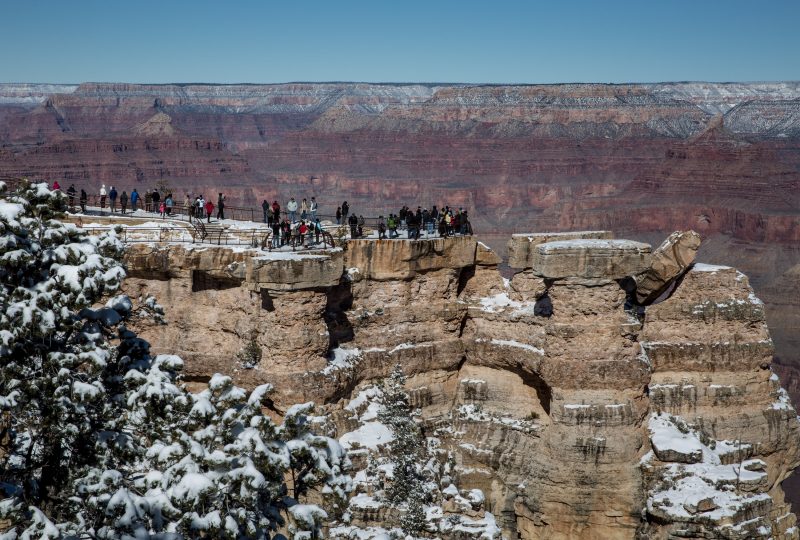
"Crisp air and a dusting of snow bring a new perspective to the temples and buttes emerging from the canyon floor," according to the Grand Canyon's website.
The cold weather is also said to "provide a perfect backdrop to view the canyon's flora and fauna."
The Grand Canyon is comprised of much more than red rocks and twisting rivers.
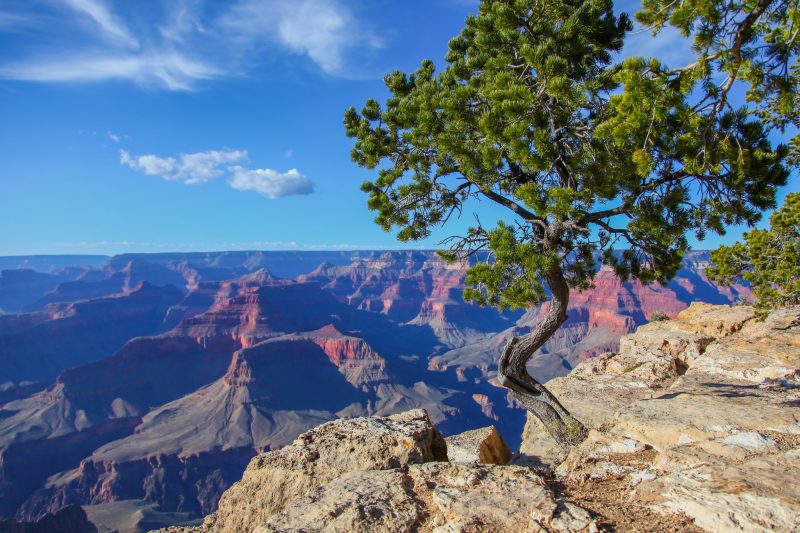
There's a surprising amount of foliage to see at the national park. The North Rim of the Grand Canyon is specifically known to experience bright colors in the fall, and offers scenic drives for travelers.
The Colorado River isn't the only body of water to see at the national park.
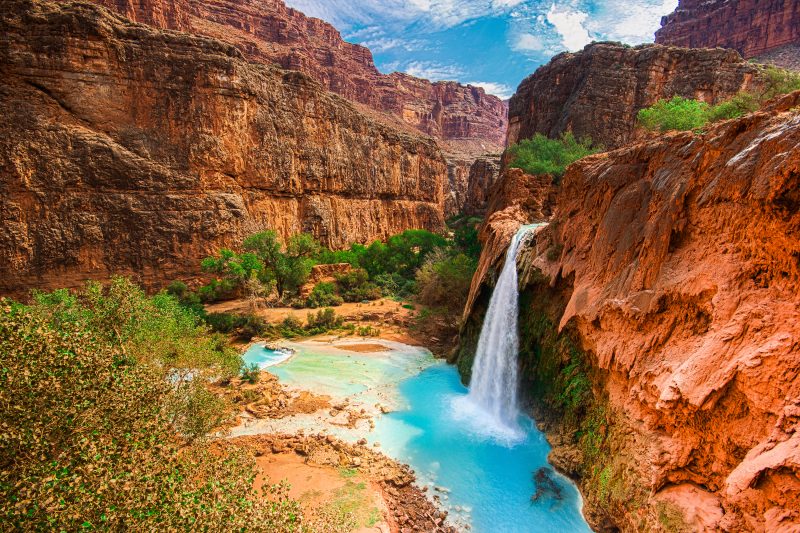
The Grand Canyon is home to a variety of streams, brooks, and waterfalls, including the Kanab and Havasu creeks. While there, visitors can simply enjoy the view, or take a swim.
Tons of wildlife can be seen roaming around the park's landscapes.
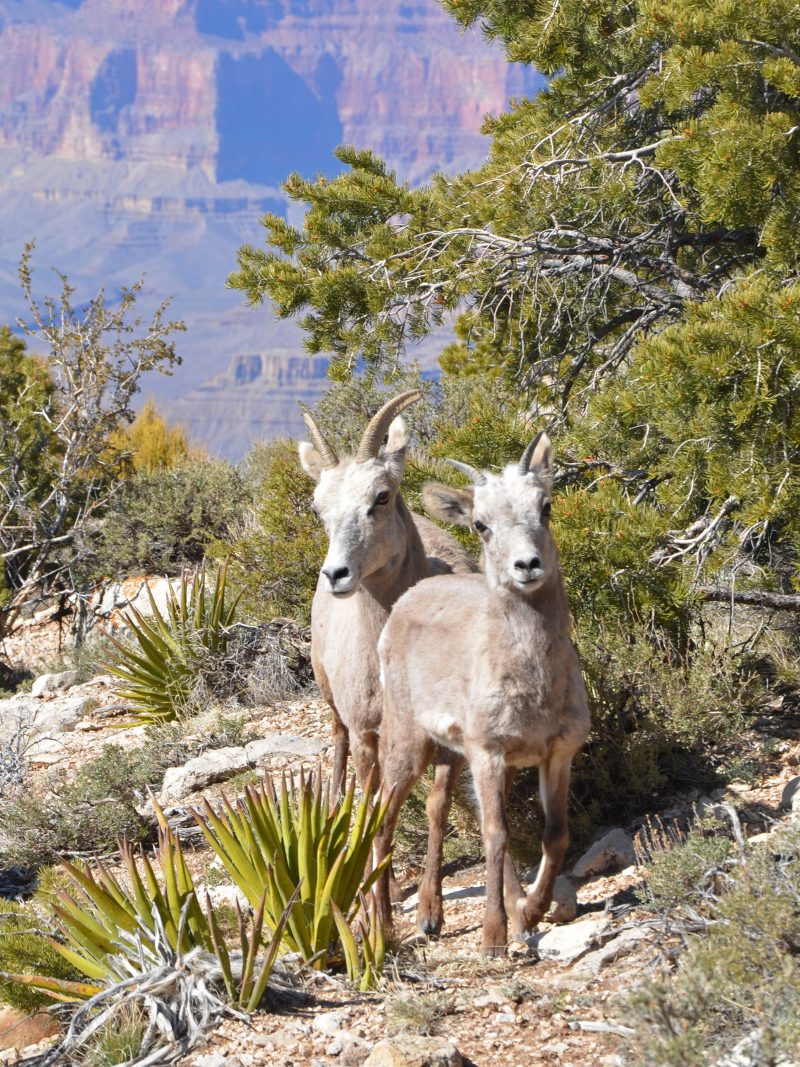
Visitors can expect to find everything from small lizards to mountain lions living within the Grand Canyon. According to the national park's website, mountain lions are quite common, but you may not see them as "they tend to blend in and do not actively approach people."
You'll also want to be wary of dangerous animals that could be living in the area as well, including rattlesnakes and scorpions. And thankfully, the national park's website has some advice for what to do if you get bitten.
There are tons of walking paths open to visitors.

Many of the Grand Canyon's walkways, including those at the park's Mather Point, are guarded by short fences.
But even when walking along a fenced trail, the views are stunning.
Outlooks at the park allow visitors to view the Grand Canyon from above.

The Yavapai Observation Station particularly stands out.
Not only does it offer views of the park's layers and rock formations, but the location's colorful stones also give some insight into how the Grand Canyon was formed, according to the location's website.
Read more: You can now zip line 1,000 feet above the Grand Canyon - here's how
Some of the most beautiful views can be found in the park's most intimidating locations.

Because the national park is so vast and its terrain is so rough, some areas of the park are left without protective fencing. Instead, visitors are instructed to follow the lead of tour guides and stay behind available fences.
One of the most breathtaking views of the Grand Canyon is accessible from the park's Skywalk at Eagle Point.
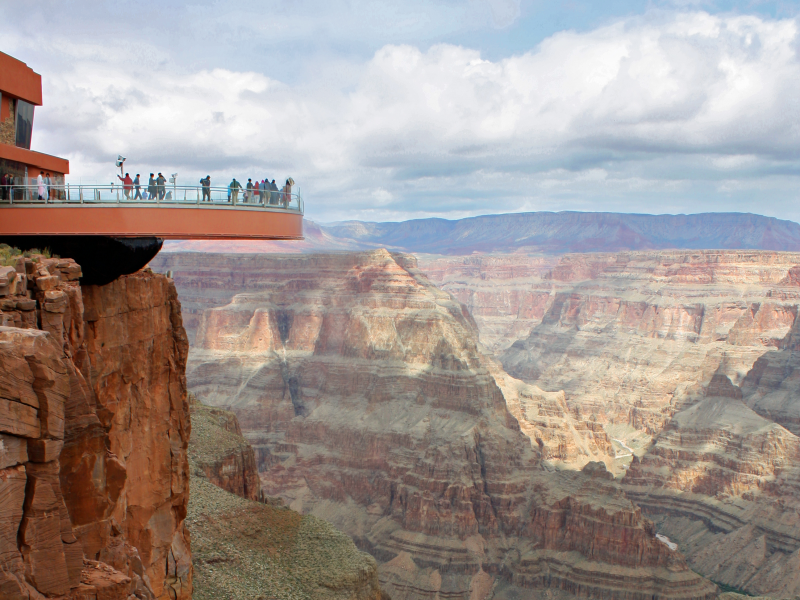
The glass walkway is located 4,000 feet above the Grand Canyon, and extends 70 feet outwards, according to the attraction's website.
Not only can you look outwards from the Skywalk, but you can also look down through its glass floor.

But, according to the attraction's website, there's no need to fear while walking along the see-through path. It's said to have enough strength to "bear the weight of seventy 747 passenger jets."
The only thing more adventurous than walking across the Grand Canyon's skywalk is rafting amid its rock formations.
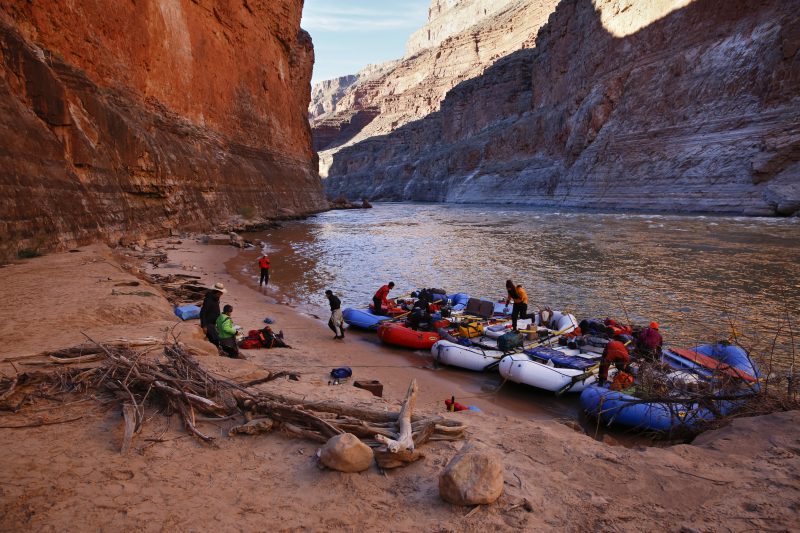
A variety of companies offer rafting tours of the area, and bring passengers safely through the Colorado River.
The activity can get pretty intense.

When rafting, visitors can expect to experience "rapids," also known as turbulence and increased water velocity. Still, many travelers find the experience to be thrilling.
Views of the Grand Canyon from the river are said to be some of the most beautiful spots in the park.
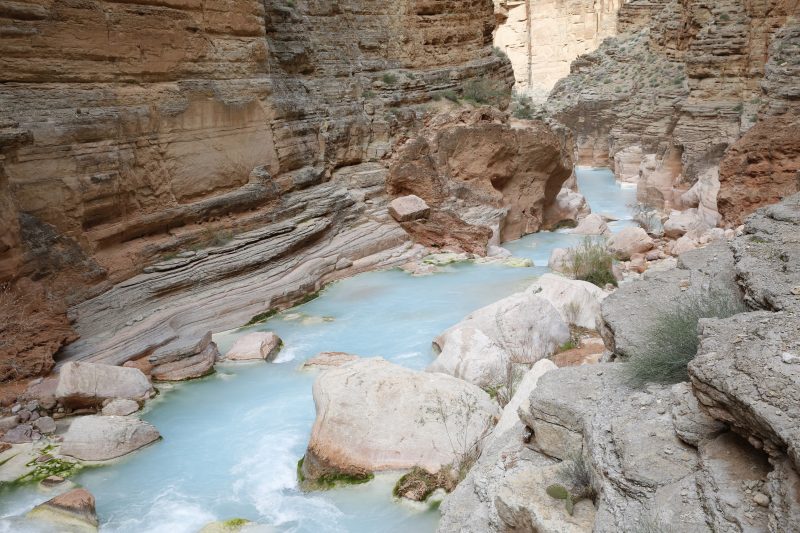
Western River Expeditions, a rafting company located near the Grand Canyon, says that rafting trips at the national park are "endless in scenic wonder, rich in Native American history, and loaded with fun and adventure."
Even the Grand Canyon's tourist structures are aesthetically pleasing.

The Santa Fe Railway Depot, for example, is a historic site that visitors love. It's one of only three remaining log depots left in the United States, and its railroad is still operating.
- Read more:
- A 103-year-old woman just became a junior ranger for the Grand Canyon National Park, which didn't actually exist when she was born
- A rare snow covered parts of the Arizona desert and New Mexico and photos of the snow-covered rocks and cacti look pretty surreal
- Scientists have found a part of the Grand Canyon in Australia, and it could provide answers about how Earth was formed
- Will Smith celebrated his 50th birthday by bungee jumping out of a helicopter over the Grand Canyon - and his message afterwards was pretty inspiring

